Long Weekend in Croatia Brings 40 Percent More Tourists Than Last Year
May 3, 2023 - For the long weekend connected with Labor Day, from April 28 to May 1, there were 256,000 registered tourists and more than 890,000 overnight stays in Croatia, which is an increase of over 40 percent compared to the same period last year, reported Croatian Tourist Board (HTZ) on Tuesday.
As 24Sata writes, data on tourist arrivals and overnight stays around Labor Day show that 49 percent more tourists came to Croatia this year than at the same time last year, while there were 42 percent more overnight stays, according to HTZ based on data from the eVisitor system.
Tourists spent the most nights in Istria, Kvarner, and the Split-Dalmatia County, more precisely in Dubrovnik, Poreč, Rovinj, Umag, Zagreb, and Split.
Commenting on these data, HTZ director Kristjan Staničić pointed out that this year's tourism results are the best announcement of the main summer season and that Croatia is an increasingly attractive year-round destination.
"After Croatia's entry into Schengen, this year it is also a more accessible destination for short and frequent weekend trips. Around Labor Day, the most numerous tourists were Slovenians, Poles, Austrians, Germans, and Italians, and there were also quite a few Dutch and British", says Staničić.
HTZ is also satisfied with the results in the first four months of this year, according to which there were 2 million tourists and 5.9 million overnight stays, which is 28 and 17 percent more than in the same months last year, as well as 4 percent more overnight stays. than 2019
In addition to domestic tourists, by the end of April this year, most foreign tourists arrived from Slovenia, Germany, Austria, Bosnia and Herzegovina, Italy, the UK, and the USA, and most of them in Zagreb, Dubrovnik, Rovinj, Split, Poreč and Opatija.
The Minister of Tourism and Sports, Nikolina Brnjac, is satisfied that the positive trends since the beginning of the year have continued over the long weekend, which she considers an additional confirmation that Croatia is desirable outside of the summer months.
"We are particularly pleased that tourists increasingly recognize the attractiveness and the offer of continental counties, which almost all achieve better results than in 2019. This all favors the fulfillment of strategic goals - the development of year-round and more regionally balanced tourism," said the minister, who is optimistic for the upcoming main part of the tourist year.
HTZ also presents data for April this year, in which there were 1.1 million tourists and 3.3 million overnight stays in Croatia, which are increases of 26 and 16 percent compared to last April.
For more, make sure to check out our dedicated News section.
Croatian Tourism Industry Continues to See Positive Trends in April
ZAGREB, 4 May 2022 - The Croatian tourism industry continued to see positive trends in April, with 876,600 tourist arrivals and 2.8 million overnight stays, which are annual increases of 260% and 231% respectively, according to the Croatian Tourism Board.
In the first four months of 2022, 1.6 million tourists stayed in Croatia, or 171% more than in the same period in 2021, while the number of overnight stays increased by 150% to slightly over 5 million.
Compared with the results of the record-breaking pre-pandemic year 2019, the number of tourist arrivals registered in April 2022 reached 75% of the number recorded in the same month of 2019, while overnight stays reached 85%. In the first four months of this year, the numbers reached 76% for arrivals and 89% for overnight stays.
In April 2022, Germans generated the largest number of overnight stays (472,200), ahead of Croatians (470,000) and Slovenians (423,300). The top five also include Austrians and Britons.
The largest number of tourist overnights was recorded in Istria County (959,000), followed by the Kvarner region (447,000) and Split-Dalmatia County (397,000). The capital Zagreb recorded 171,000 overnight stays, which is more than all the other continental regions combined (156,200).
In the first four months of the year, the largest number of overnight stays was generated by Croatian tourists (1.3 million), Slovenians (643,300) and Germans (638,300). They were followed by tourists from Austria and Bosnia and Herzegovina.
Istria recorded the largest number of overnight stays (1.5 million), ahead of Kvarner (827,900) and Split-Dalmatia County (675,400). Zagreb followed with 517,600 overnight stays, which was again more than all the other continental regions combined (460,000).
On 1 May, the Labour Day holiday, about 175,000 tourists visited Croatia, which was 48,000 more than on the same day in 2021 and 22,000 fewer than in 2019.
For more, make sure to check out our dedicated lifestyle section.
Zagreb in 24 Hours: Cruising Through the Capital
28 April 2022 - Many people associate Croatian tourism with its famous coastline and sunny beaches. But the nation’s capital is an underrated gem. Here, I show you the best way to visit Zagreb in 24 hours.
Zagreb is the capital and the largest city of Croatia, with a rich history dating back to Roman times. Described by locals as a "big town disguised as a small city", Zagreb is a mix of Western Balkan and central European culture with laid-back, youth-led rhythm. Walking down the promenades, visiting the outdoor market, and drinking coffee in its vibrant settings, this 24-hour itinerary will have you feeling like a local in no time. From historic locations to museums to a bar crawl, everything covered is within the centre of Zagreb, at most a short tram ride away.
10.00 a.m-13.00 p.m.
Get a good start to the day by walking around the centre of Zagreb, where you’re going to want to pass through some of the iconic walking spots like Tkalčićeva street, where you can also stop for a quick coffee or drink at one of its many open cafes.
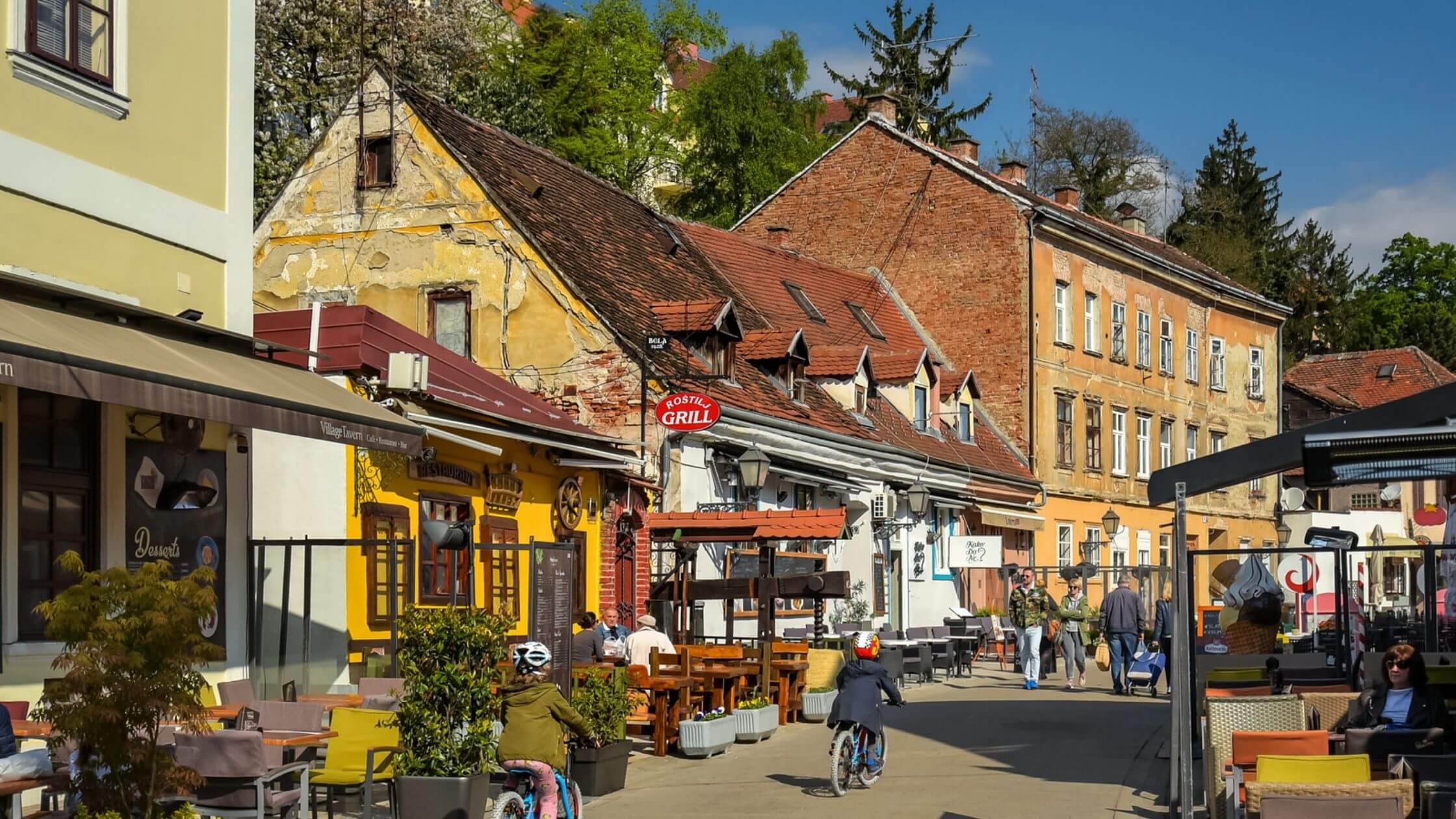
Image: Jorge Franganillo/Flickr
If you find yourself hungry right away, stop for breakfast or brunch at the nearby Otto & Frank. Definitely go for their signature dish, the Zagreb Breakfast - Zagreb’s answer to a traditional breakfast dish complete with toasted bread, cottage cheese, and crispy poached eggs. Their menu contains other brunch staples from oatmeal to French toast, many of which are veggie.
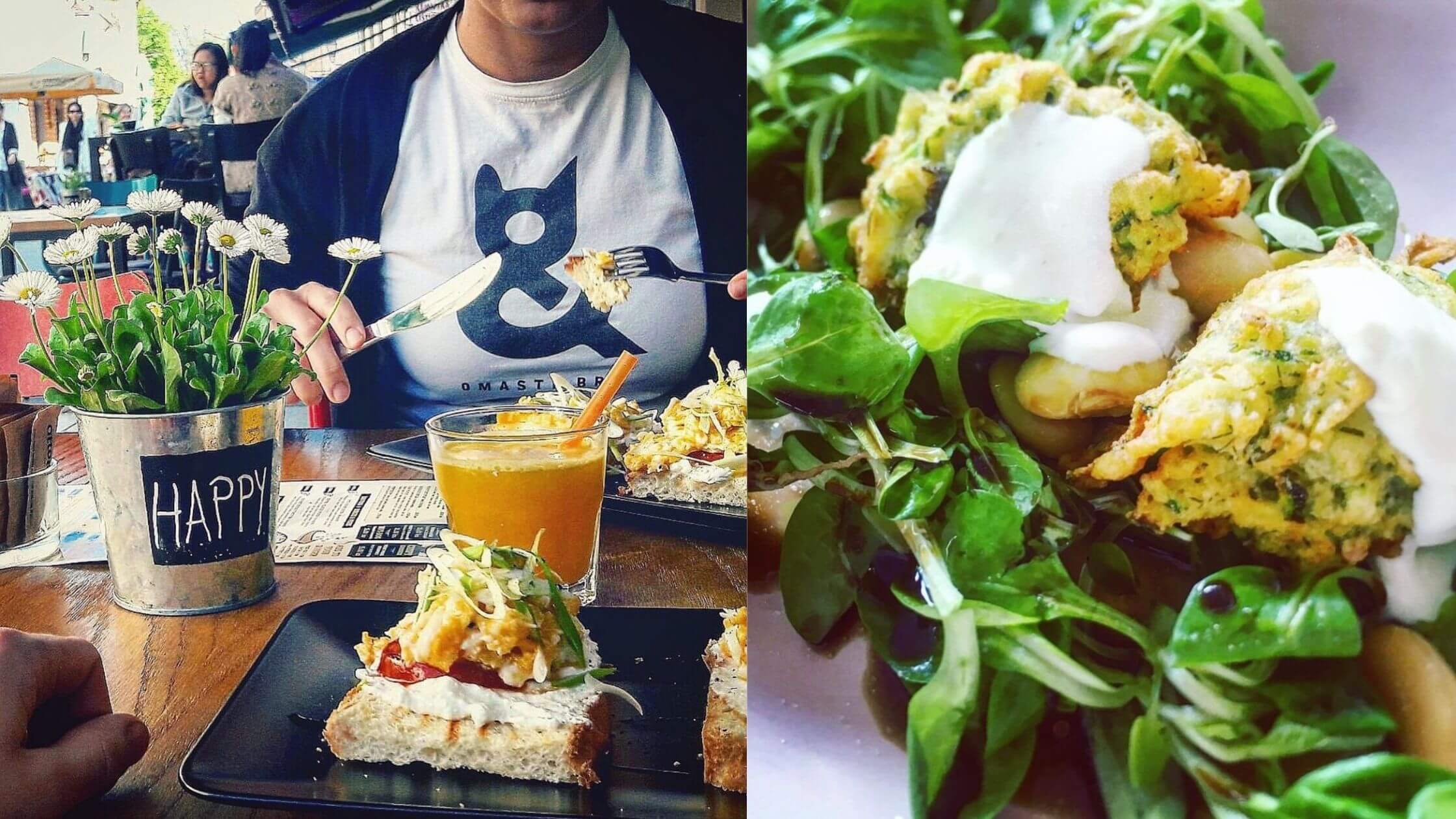
Image: @otto_frank_bar/Instagram
Alternatively, go for a coffee at Mala Kavana, a coffee shop/brunch place overlooking the Josip Jelačić main square. Zagreb is home to its own coffee culture - sitting at a vibrant open space with a strong coffee and a friend is part of the ZG lifestyle. And for this packed day, I have planned for you, you're gonna want to fuel up on caffeine.
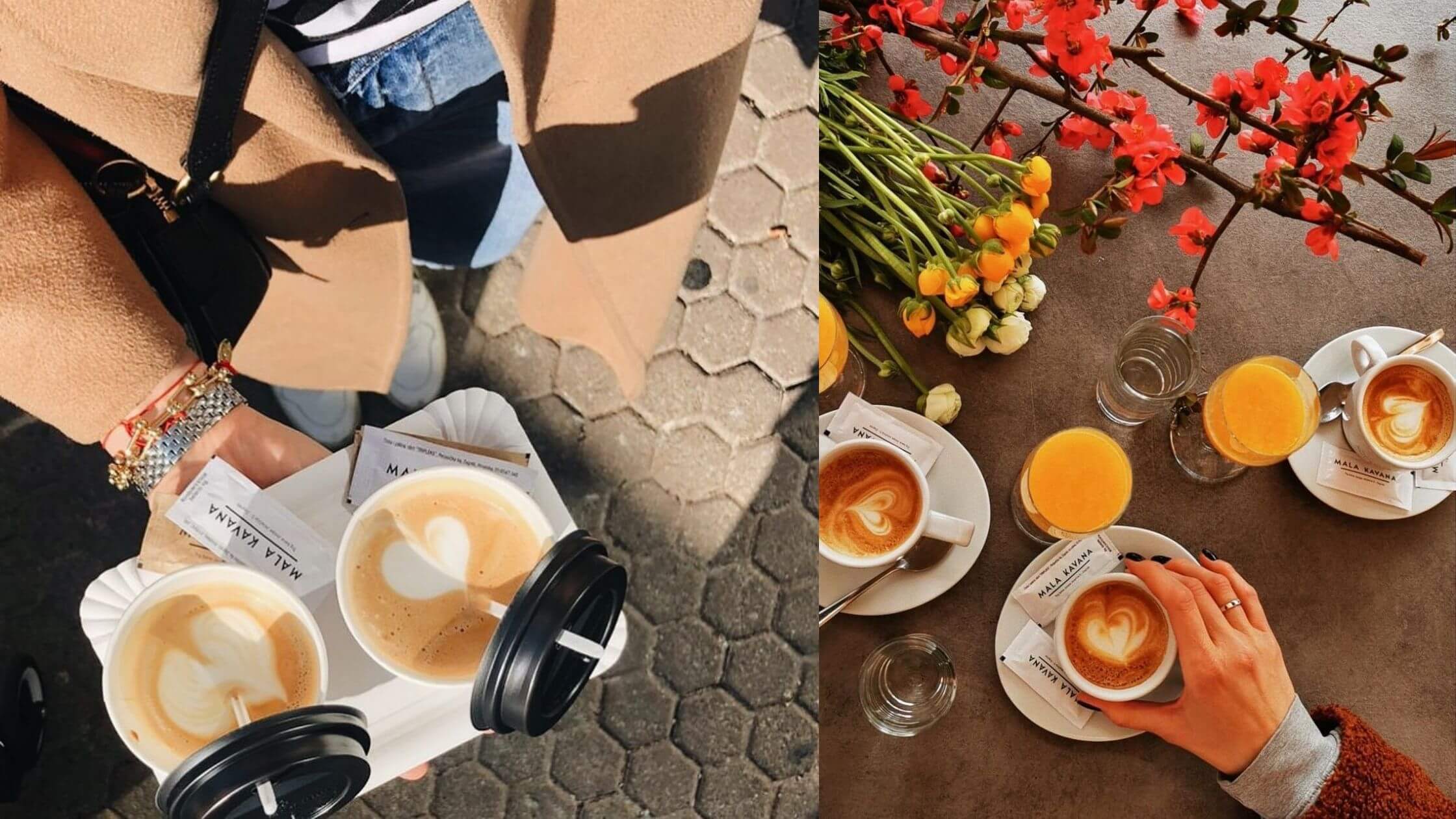
Image: Mala Kavana/Facebook
And if you prefer to eat on the go, quickly grab a pastry from one of Zagreb’s bakery chains such as Dubravica or Dinara - the nearest in the centre being in Dolac, from which you may detour towards the end of Tkalčićeva. An iconic place of Zagreb culture, the open-air farmer’s market is where traders from all over Croatia sell their locally grown produce, from fresh fruit and vegetables to different types of cheese. The market also has a butchery and fish market, in addition to pasta vendors, gift shops, and flower stalls.
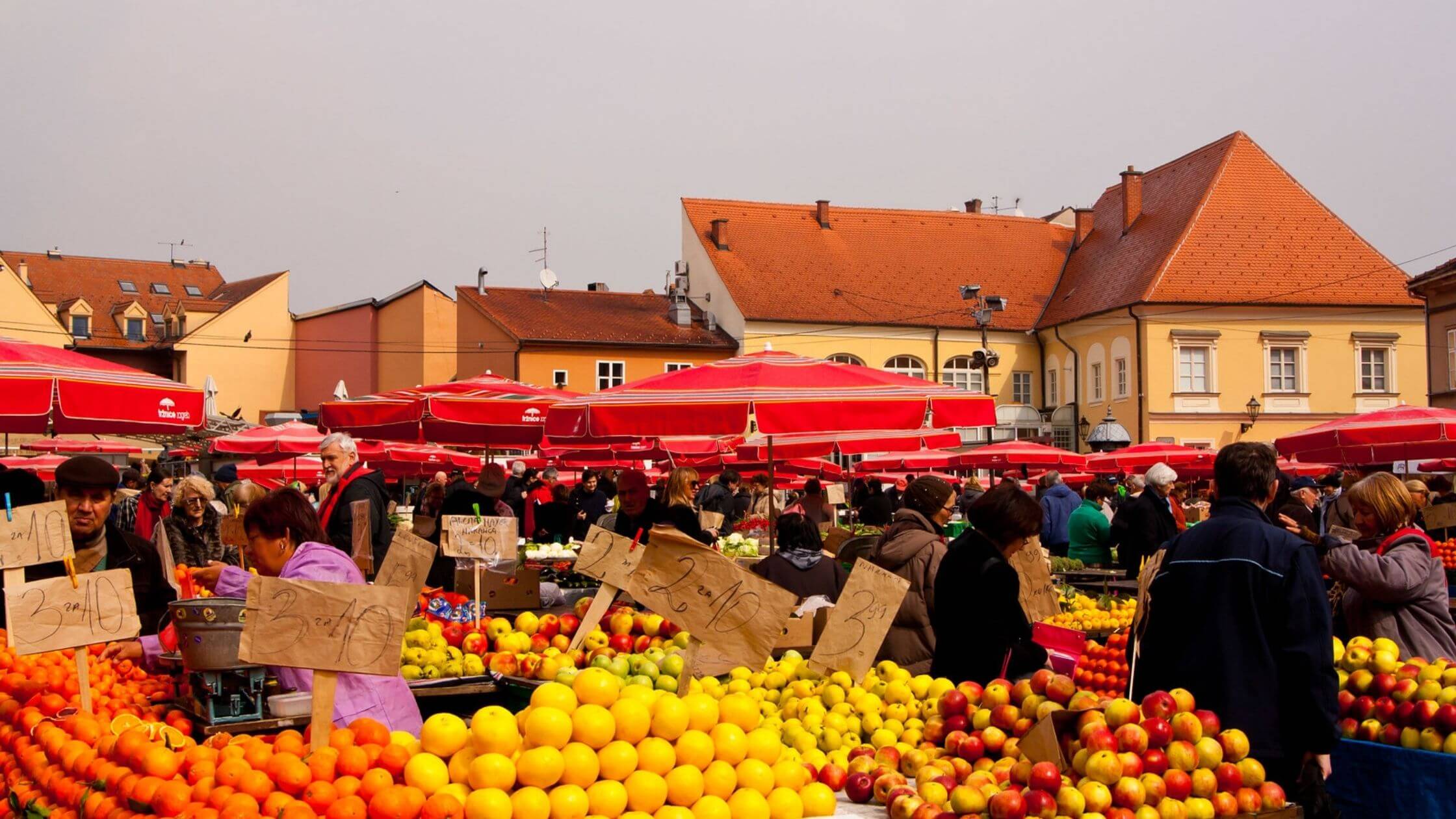
Image: Jerome Rondeau/Flickr
13.00-15.00 p.m.
You definitely will want to hit one of Zagreb’s museums, whether it’s one of the art galleries like Klovićevi dvori, or the more one of a kind ones, like the Museum of Naive Art, the Museum of Broken Relationships, or the Zagreb 80s Museum, all within walking distance of the upper town. Or, the quirky Museum of Illusions in Ilica or the Chocolate Museum in Varšavska street (near the Cvjetni square). The appeal of Zagreb museums is not only its diverse range and creative design, but also its prices and accessibility. Tickets can be bought upon entry, and are usually at an average price of 50kn per adult.
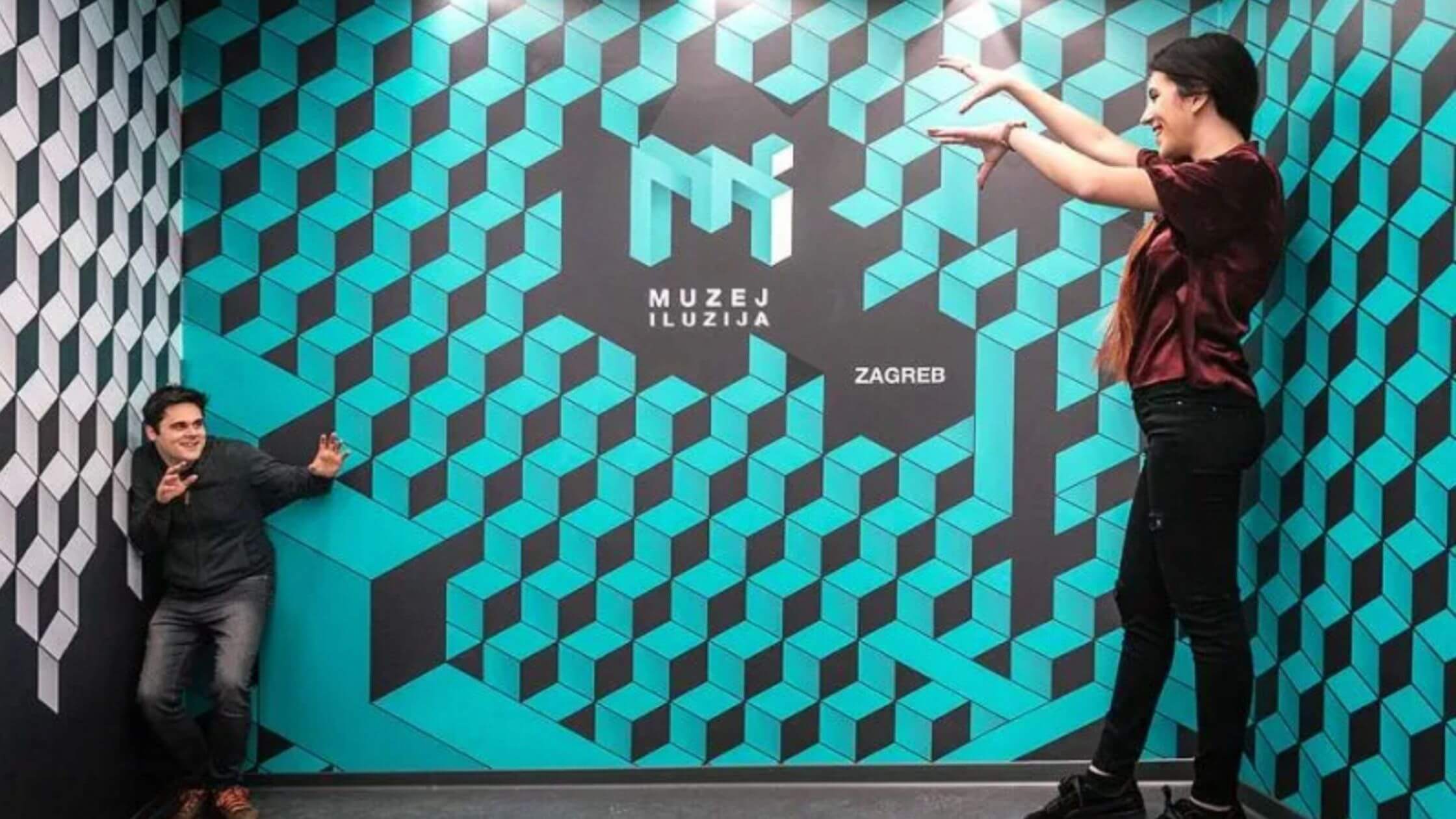
Image: muzejiluzija.com
15.00-17.00 p.m.
From the upper town, head from one of the former museums to some of Zagreb’s historic landmarks, from St. Mark’s Church, to the Strossmayer Promenade, the idyllic walking space of the Zagreb upper town complete with a panoramic view of the city, and the location of the historic Grič cannon and the world’s shortest funicular - Zagreb’s first and oldest means of public transport. Connecting Strossmayer to Tomićeva street, this short and sometimes even deemed "pointless" ride is nonetheless a must when visiting Zagreb. If heading out from the Museum of Illusions or Chocolate Museum, take the funicular upwards from Tomićeva to Strossmayer.
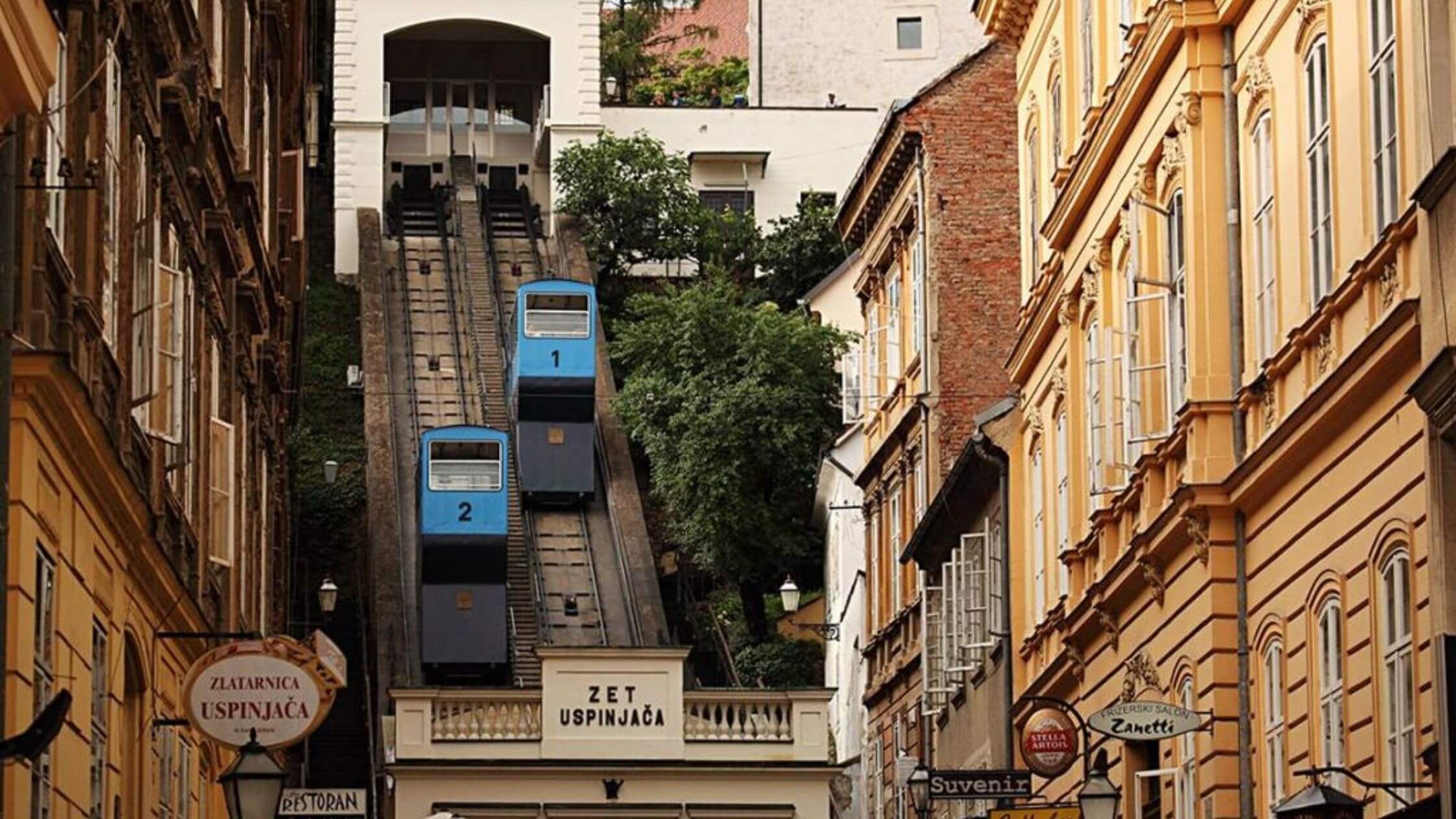
Image: inavukic
But regardless of which route you take, by now you'll want a break from all that walking, and what better way to do so than to stop for some sweet delicacies. Right beside the funicular end at Tomićeva is Vincek, the famous Zagreb cake shop, or rather its small outdoor branch known as Vis a Vis. Their kremšnita (cream pie) is a Zagreb favourite, and definitely one to savour in the outdoor setting, next to the carrot cake or triple chocolate brownie. What’s more, all their pastries are gluten-free, meaning those with allergies do not have to miss out.
 Image: Gilbertt G/Tripadvisor
Image: Gilbertt G/Tripadvisor
18.00-20.00 p.m
As the sun sets, head down to Zrinjevac park, a popular hanging spot to just sit in the grass and enjoy the atmosphere. Stop at the nearby Studenac grocery shop for some drinks or snacks, and chill out in the park. If there is an event happening, such as Cest is dBest or the Food and Film Festival, enjoy the music, performances, food and drink, and souvenirs.
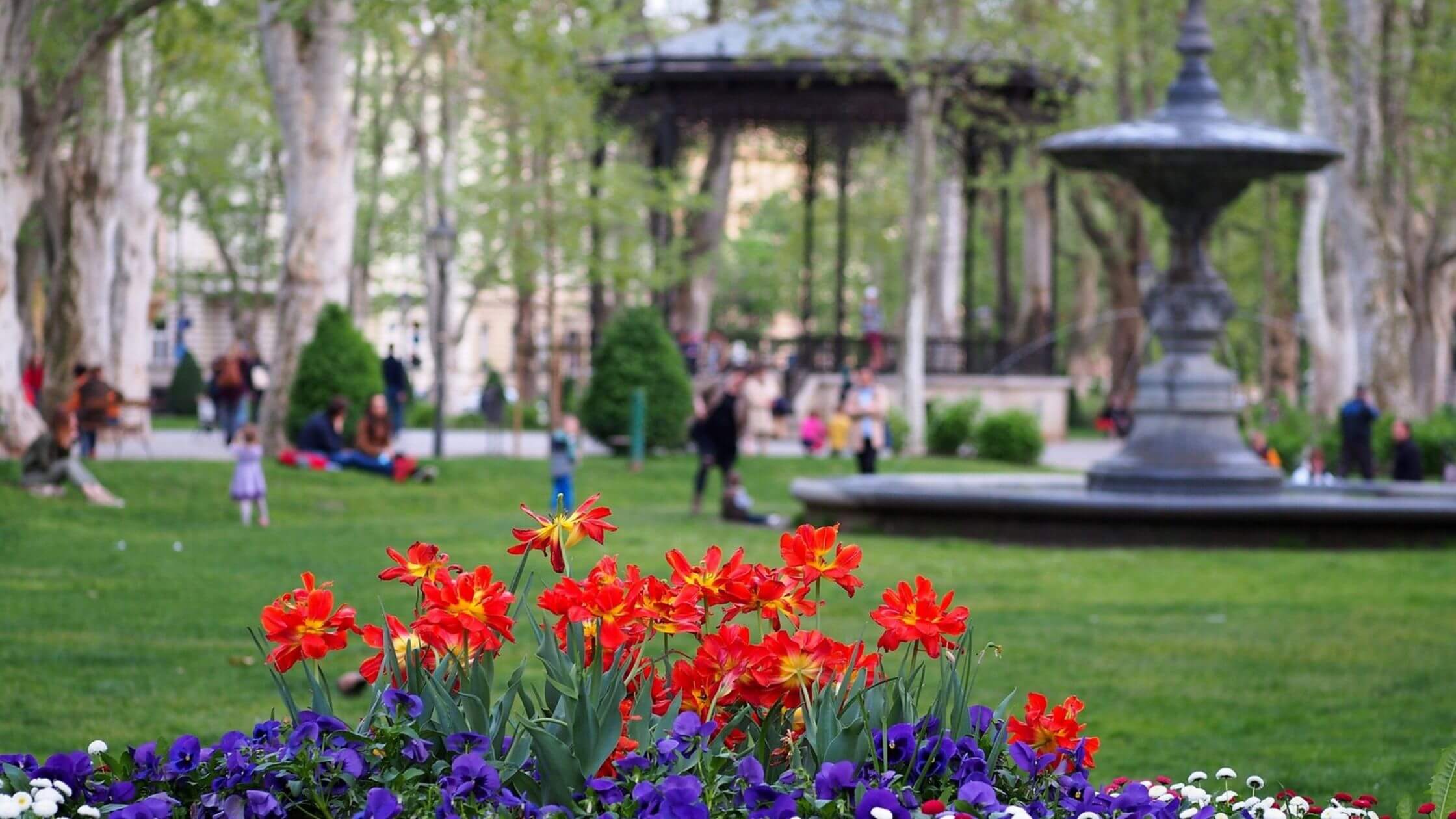
Image: e r g a s/Flickr
Otherwise, just use the hours to rest and take in the scenes. Walk around the park and go into the other nearby ones like the Josip Juraj Strossmayer park or the one at Kralj Tomislav square.
20.00-23.00 p.m.
If you're after a night out at the club, know that the Croatian way is to go in late hours. Which leaves plenty of time for a bar crawl to get your energy going for a long night ahead! Zagreb has a rich nightlife scene that has only continued to grow in recent years, and no matter what you're into, there is something for everyone. On the main square you have the popular bar and club Johann Franck. Going in towards Bogovićeva street, there’s Bulldog, and in Ilica, the stunning Swanky Monkey Garden, with its chill garden terrace vibe and excellent cocktails. And in the summer, head on further down to Tuskanac for the Pop Up Summer garden. For more info on what to do in Zagreb during the summer season, check out our guide covering festivals and other events in Zagreb that are either cheap or totally free.

Image: Swanky Monkey Garden/Facebook
Now, if you identify more with counterculture, a bar crawl of Zagreb’s range of alternative pubs is the way to go. Starting on Preradovićeva street, you have Alcatraz, the bar/nightclub that has earned itself a cult following thanks to its regular lineup of cheap drinks and rock tunes.
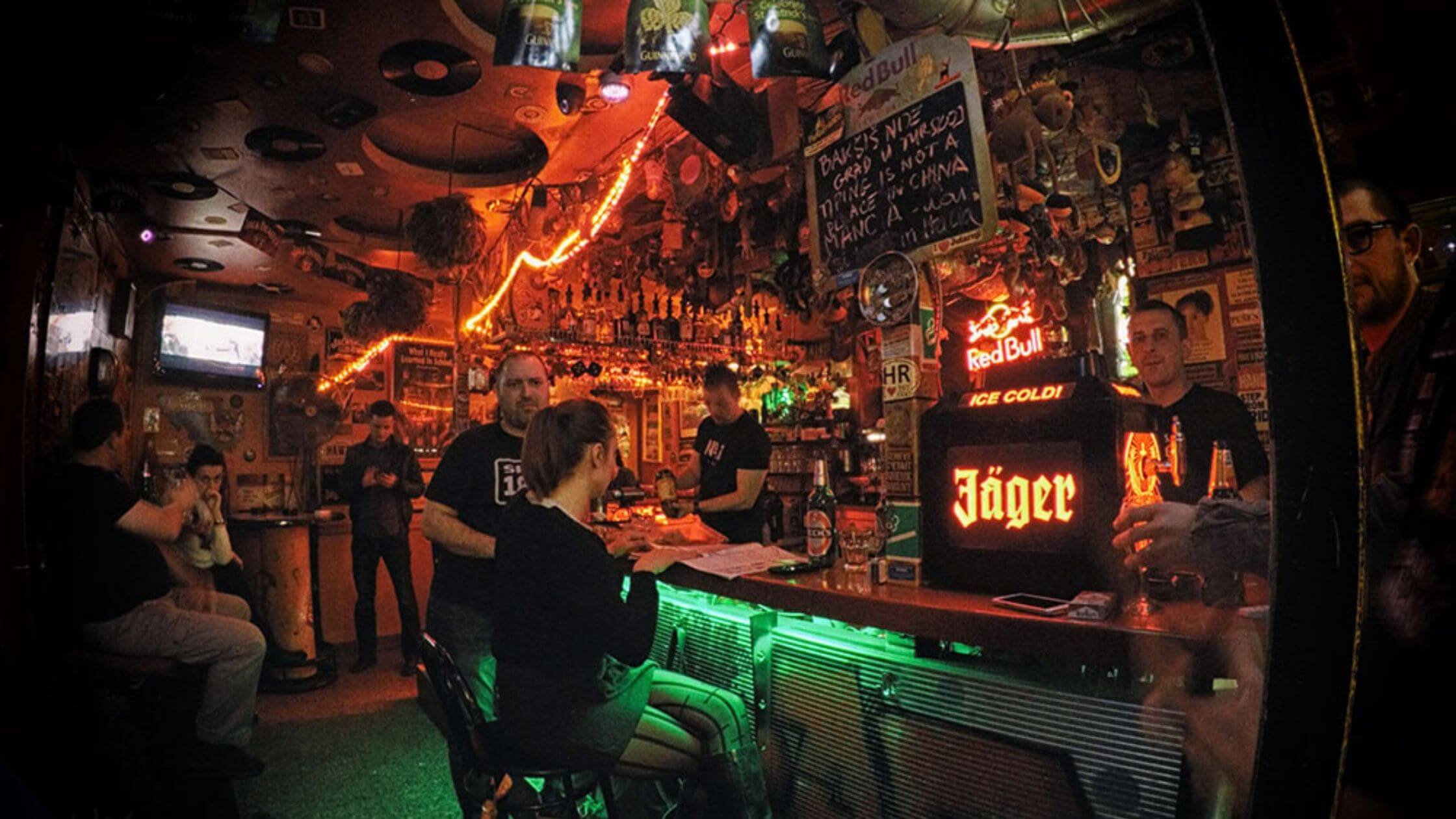
Image Credit: Neven Vukovic/CityPal
Nearby there’s Rock star, fully adorned on every wall with rock memorabilia, and just 9 minutes away is The Beertija, the rock-themed outdoor beer garden and nightclub with its long menu list of top-quality beers.
23.00 p.m-early hours
Now that it's time to hit the clubs, there’s the trendy Opera on Petrinjska, known as one of Zagreb’s top clubs with the best events and party atmosphere, attracting large numbers of visitiors in the spacious interior from late night till the early morning hours.
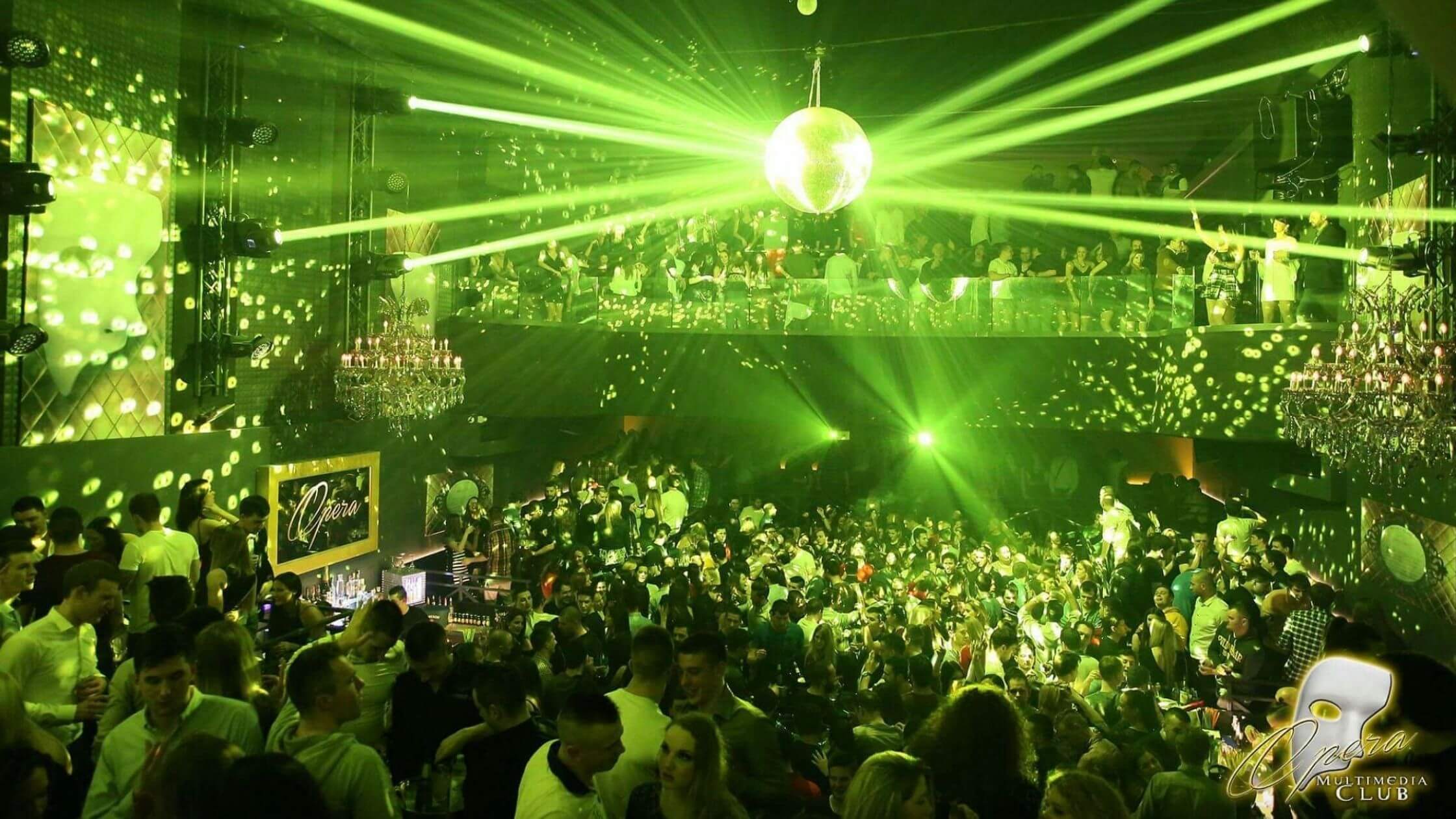 Image: Pjerino B/Tripadvisor
Image: Pjerino B/Tripadvisor
For those following the alternative bar crawl, there’s Vintage Industrial at Savska (easily go there from i.e. the Beertija, via the 4 or 17 tram), or for the younger crowd, Močvara at Trnjanski nasip (slightly further away and best reached via the bus).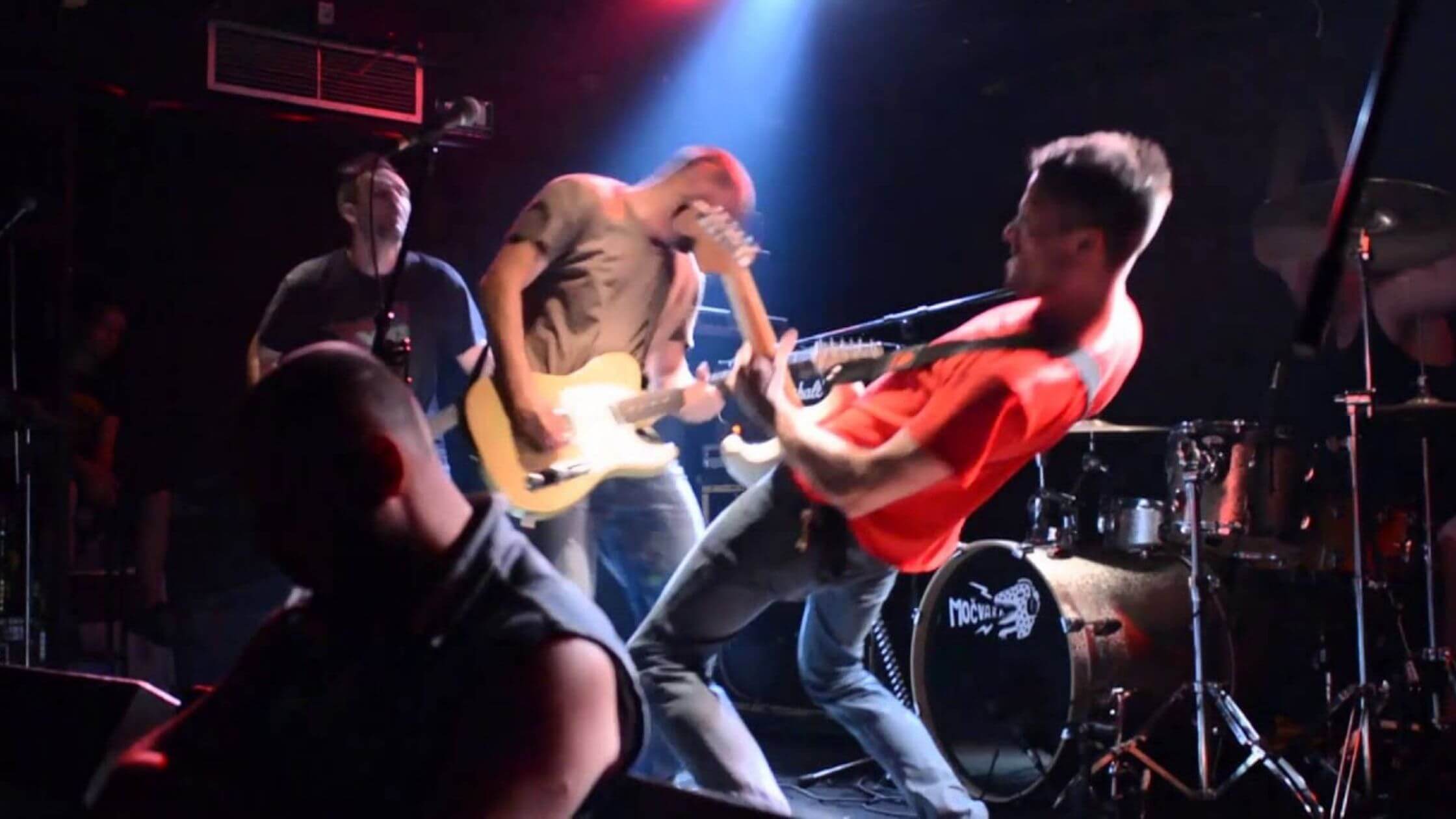
Image: mochvara.hr
6.00-9.00 a.m.
If you’ve finished a long night out or just want to get a quick coffee before wrapping up the day, you can always head back to the main square and stop back at Mala Kavana, or grab a slice of pizza at Fries Factory - the latter being a classic post-night out snack stop.
And there you have it, the best 24 hours spent in Zagreb, hopefully showing just how much the small capital has to offer - not just its history and culture, but also its people and way of living.
For more on travel in Croatia, follow TCN's dedicated page.
Rijeka in 24 Hours: Footsteps on the Crossroads of Empire
27 April, 2022 - While it may not have the international reputation of Dubrovnik or the quaint village charm of Rovinj, Croatia's third-largest city is well-deserving of the attention of the zealous globetrotter. Here's all you can do in Rijeka in 24 hours.
Rijeka, or Fiume as it is called in Italian nomenclature, is Croatia's principal seaport and third-largest city. Because of its unique location and advantageous deep-water port, this gem of the northern Adriatic has been contested by many fantastic realms, including the Hungarians, Italians, and the Holy Roman Empire. Luckily for us, centuries spent at the causeway of great power have left much to be admired by those who venture to the city, labeled 2020's European Capital of Culture. Are you looking for the dynamic urban energy from which European cities earn their fame, or maybe you'd prefer the casual beachy vibes that draw millions to the coast every summer? If you want all these things and more, the choice is already made. Rijeka is the destination for you.
To facilitate your journey, I have put together a guide to 24 hours in Rijeka, including some of the best that this city has to offer.
9.00 a.m. – 10.00 a.m.
There is no better way to start your seaside getaway than with a classic Mediterranean breakfast of fruits and pastries. Think croissants, melons, oranges, maybe with a small cup of strong coffee. Whether starting from a luxury villa or a bargain Airbnb, you should take pleasure in the day's first meal. While there are numerous cafes that offer a selection of tasty early-morning delicacies, personally, I prefer to purchase my own rations from the market. The Rijeka's harborside market opens at 7.00 a.m. Explore the stands overflowing with fruits, vegetables, seafood, meat, nuts, and of course, liquor. Purchase whatever suits your fancy, and don't forget some snacks for later.

Image: Rijeka Tourist Board
10.00 a.m. – 12.00 p.m.
Since you're now out and about, get the ball rolling by wandering through the oldest part of the city. Located near the remains of the Roman settlement of Tarsatica, which dates to the 3rd century A.D., take part in Rijeka's long history as a trade city. While still part of the Austro-Hungarian empire, goods were toted in and out of this still-bustling port city, moving products like sugar, paper, and the torpedoes invented there.
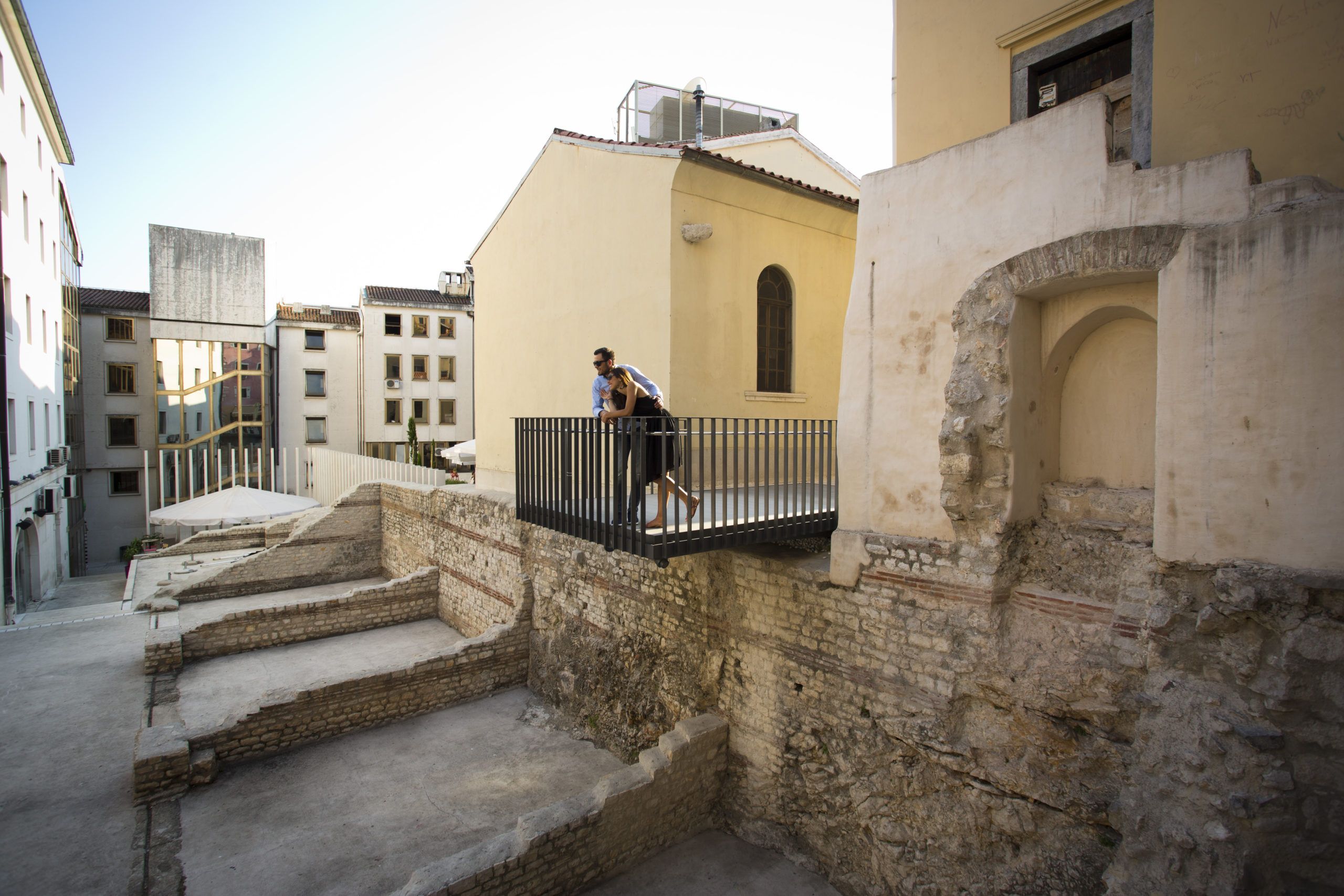
Image: Rijeka Tourist Board
In the old town, you too can find exciting products either for yourself or the loved ones waiting for you at home. Croatia in a Box, a boutique that sells many handmade items, including beautiful hand-carved oak bowls, comes highly recommended. Combine and create your own version of Croatia in box form.
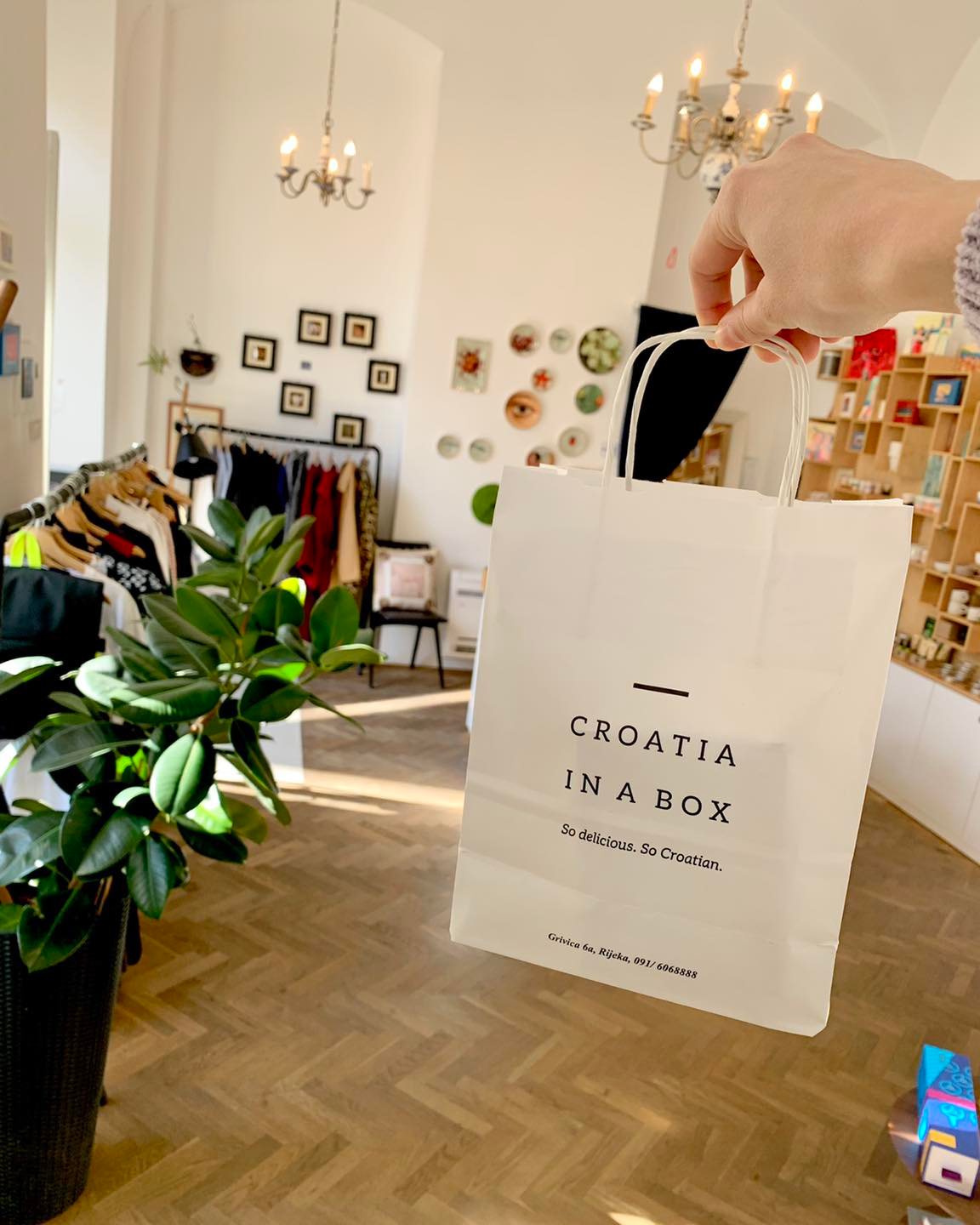
Image: Croatia in a Box (Facebook)
12.00 p.m. – 2.00 p.m.
Search for a spot to plant yourself and enjoy a delicious Croatian lunch. While there are options for every palate, the local specialties are mostly seafood-based. Enjoy shrimp and truffle sauce on a bed of pasta, delightful scampi, or surrender to the day's soup containing the best catch. Whatever you choose, I'm sure you'll find new meanings for the word "ukusan" or "delizioso." If you're unsure where to eat, the restaurant Konoba Fiume provides those who enjoy the local experience with an authentic local midday meal.
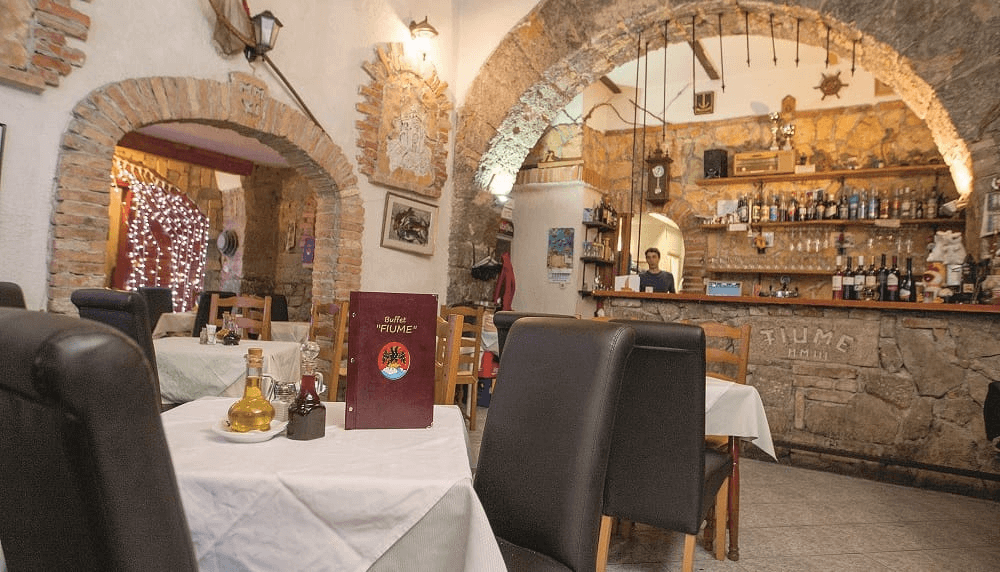
2.00 p.m. – 3.00 p.m.
Now that you are full of delicious Croatian goodies, it's time for a history lesson. It can't be a European vacation without visiting at least one museum, right? The Maritime and History Museum of the Croatian Coast is located in the Governor's Palace, providing visitors with information about a region that the guidebooks often leave out. The museum contains exhibits covering periods from the Bronze Age up to the modern era.
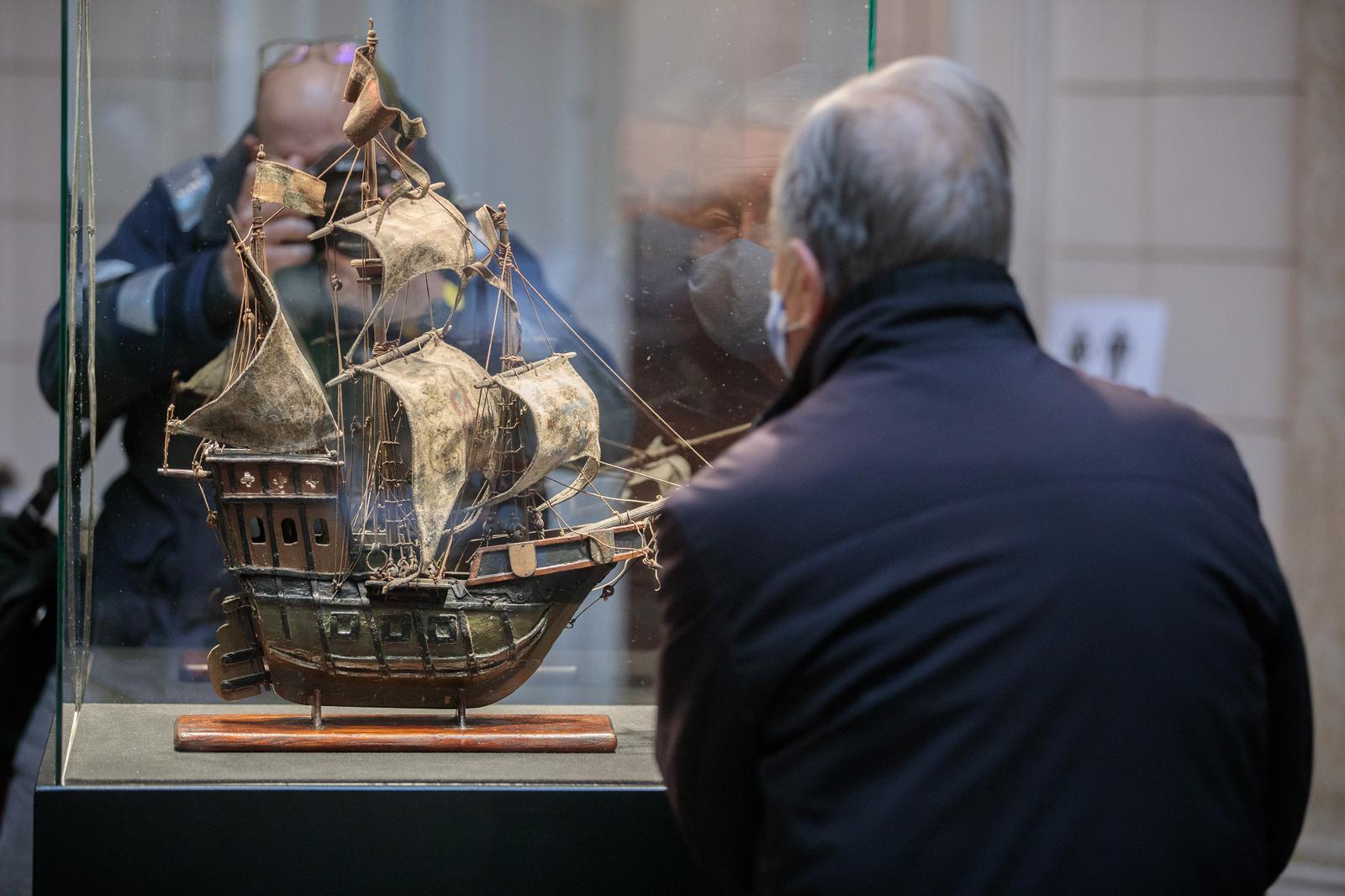
Photo: Nel Pavletic/PIXSELL
For the techy nerds out there, the Peek & Poke Museum provides a glimpse at over 7,000 pieces of tech-nostalgia. Brings the kids! The museum has numerous exhibits geared towards educating children on the importance of computers and technology both in the past and future.
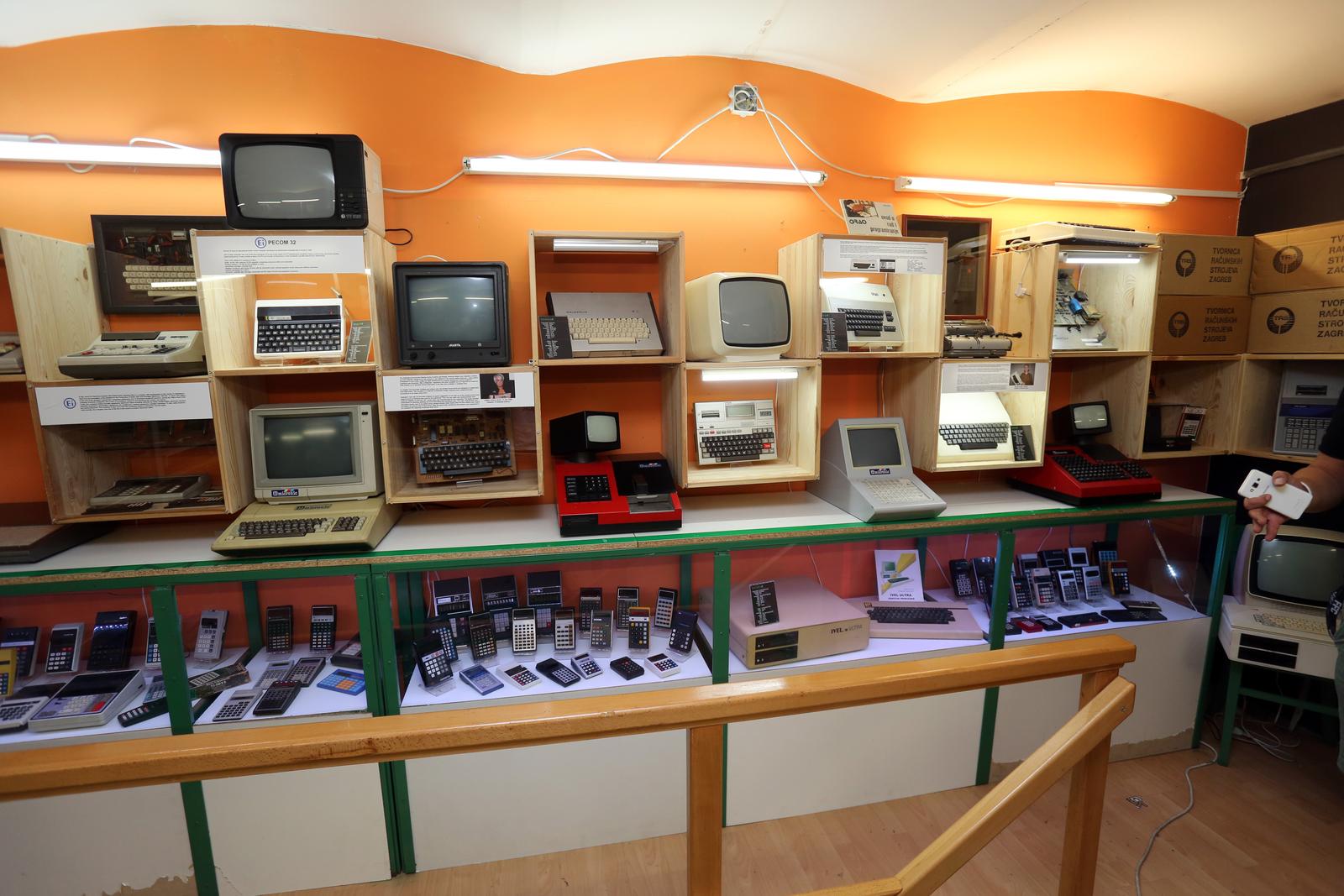
Photo: Goran Kovacic/PIXSELL
Perhaps you find history a bit dull, and computers aren't your thing. Well, worry not! The Museum of Modern and Contemporary Art may be just what you're looking for! This edgy venue sports 8,000 pieces, including paintings, photography, sculptures, and drawings. Channel your inner art critique and bring your biggest, blackest pair of sunglasses to shine in this sophisticated European atmosphere.

Photo: Goran Kovacic/PIXSELL
3.00 p.m. – 5.30 p.m.
After a day of walking, reward yourself by climbing 561 steps… it'll be worth it, I promise. The Petar Kruzic Stairway leads up to the Trsat Castle, which is positioned on the edge of the Rjecina River (Fun Fact: Rijeka and Fiume both mean river in Croatian and Italian, respectively).

Trsat castle overlooking the city of Rijeka below. (Image: Rijeka Tourist Board)
Witness the Kvarner Bay, the Istrian peninsula, and the city itself as you take in the otherworldly views that have transformed Croatia into a 21st-century tourism Mecca. Enjoy the eclectic architectural mixture of the houses below, a firm reminder of the heterogeneous nature of Rijeka's history.
5.30 p.m. – 8.00 p.m.
By this point, you're probably ready for a break. Head back down to the city and search for a tavern or seaside grill where you can replenish the energy you lost climbing all those stairs. The city comes to life in the warm evenings of the summer months. Consider trying octopus or some black risotto, a tentacled delicacy along this coast. You can wash it all down with a glass of local wine or maybe even a shot of slivovitz, a plum liquor that is quite popular in this part of the world.
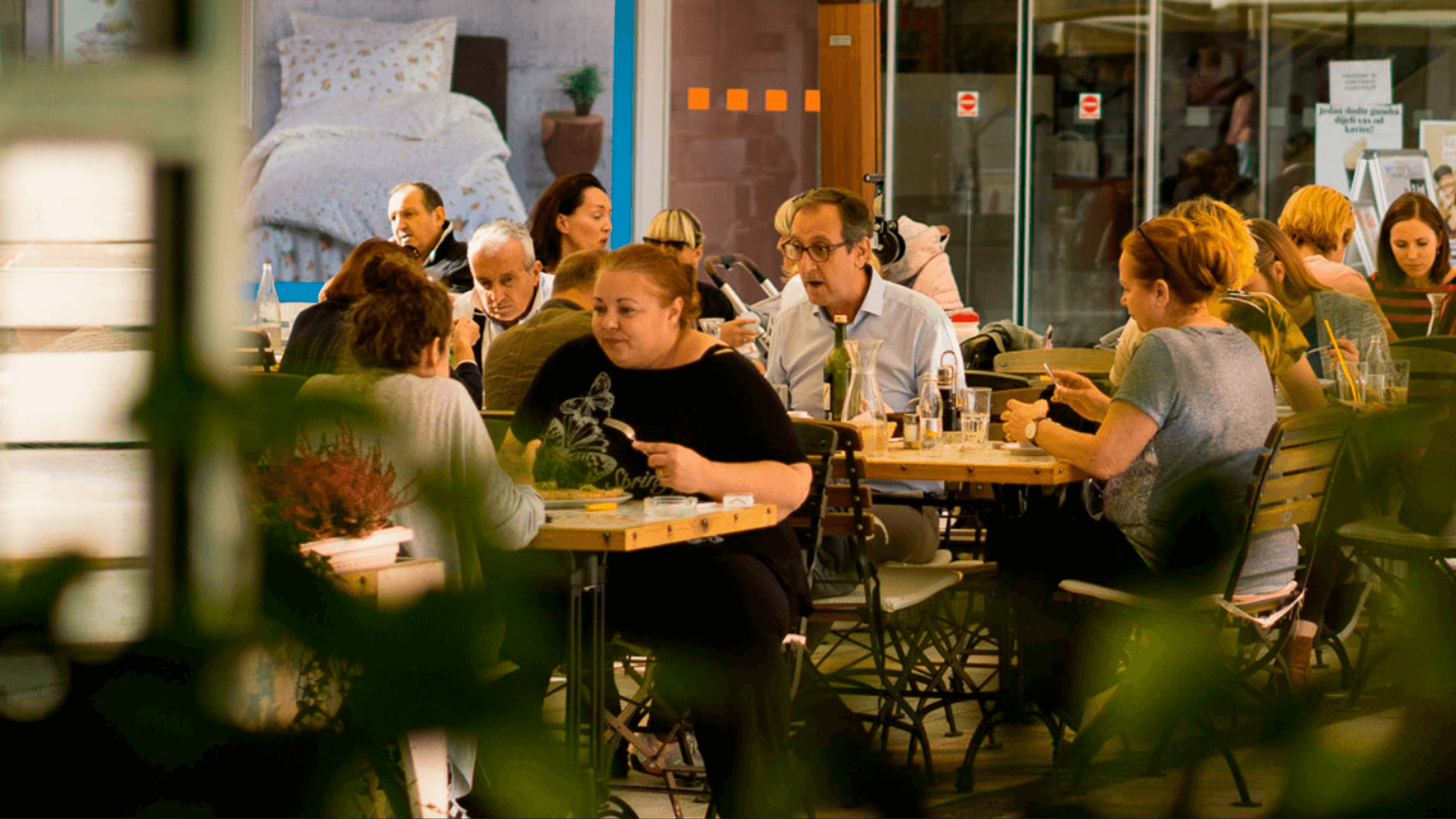
After 8.00 p.m.
For those craving a bit of late-night action, check out the industrial zone. Beer lovers can check one of the late-night water holes (Caffe Bar Skradin is often recommended) and wash off some Mediterranean heat with an ice-cold Croatian pint. If you're more into the music scene, try the Tunnel Club, a nifty venue located under the train tracks that features jazz, indie, and alternative tunes. For the more mainstream Europop fans, finish your night at Zivot and sweat out the jitters to house music under the gaze of Yugoslav-era 1980s family portraits.
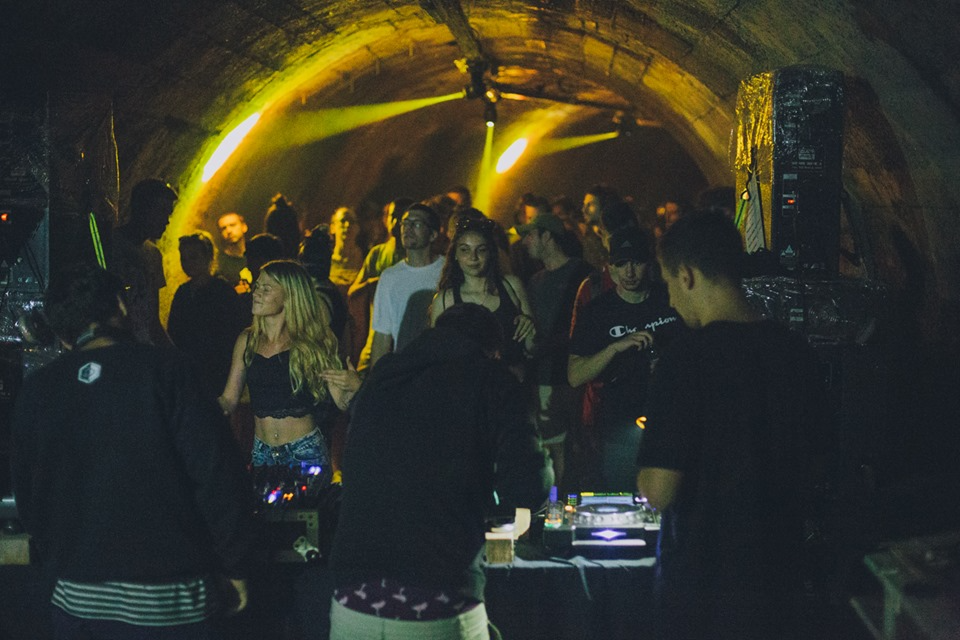
Tunel Club in Rijeka. (Image: Tunel Club/Facebook)
Whatever you choose to spend your time doing in Rijeka, be sure to try out at least a few of these suggestions. You'll be sure to take home stories more valuable than any souvenir.
If you want to find everything you need to know about Rijeka, be sure to check out Total Croatia's complete guide, Rijeka in a Page.
For more on travel in Croatia, follow TCN's dedicated page.
Over 460 Flights to Croatia This Summer, Tourist Board Says
ZAGREB, 20 April 2022 - There will be over 460 flights to Croatia during the summer schedule, the National Tourist Board (HTZ) said on Wednesday.
Zagreb and Split expect the highest number of rotations, about 10,000, while Zadar and Rijeka expect the highest increase in rotations in comparison with 2019, by 63% and 8% respectively.
During the summer, Croatia will be connected with 131 cities abroad, down from 134 in 2019.
The highest number of rotations is expected with Germany, Great Britain, France, Italy, and the Netherlands.
During the summer, 66 airlines will operate between Croatia and foreign destinations. Ryanair, Croatia Airlines, easyJet, Lufthansa and Eurowings expect the highest number of rotations.
HTZ director Kristjan Staničić said this year the recovery of air travel continued after a considerable decline due to COVID.
During the summer, there will be more than 460 flights to Croatia with more than 34,000 rotations almost the same numbers as in the record year 2019, he added.
For more, check out our lifestyle section.
Croatia's Tourist Sector Expects Rise in Trade During Easter Holidays
ZAGREB, 6 April 2022 - Croatia's tourist industry expects an increase in turnover during the forthcoming Easter holidays, according to findings of a survey conducted by the National Tourist Board (HTZ). However, uncertainties stemming from the war in Ukraine can affect these expectations.
During the Easter holidays last year, when Easter was on 4 April, Croatia registered 36,000 tourist arrivals and 140,000 overnight stays.
This year, Easter falls on 17 April, and the norm is the later the date that Easter falls in, the more tourists can be expected.
Easter and the school spring holidays are usually seen as the heralds of the summer season.
According to the survey, the Rijeka coast and islands off Rijeka as well as Dubrovnik-Neretva County are the most optimistic about this Easter season, expecting a 20% rise in comparison to last year's results.
The Istria and Zadar counties expect a growth ranging between 16% and 20%, while the forecasts of the Šibenik and Split counties are about 10% rise.
Concerning the mainland of Croatia, the capital city of Zagreb expects a growth higher than 20%.
During the Easter holidays, hotels usually start opening their doors, and the highest number of hotels that have announced the reopening for the new season in mid-April are in the Dubrovnik and Šibenik counties.
For more, check out our lifestyle section.
Introducing Three of Croatia's Minority Communities
31 March 2022 – The European continent is infamous for its ethnolinguistic diversity. Anyone who has journeyed across the winding and seemingly haphazard borders which paint the atlas know that accents, dialects, and even whole language families can change within as little as 5 km. A look into Croatia's minority communities.
Some countries are pointed out more frequently as linguistic mosaics, while others have yet to garner such recognition. For example, most Spaniards would likely agree that anyone who visits Barcelona and fails to embrace the Catalan ethos has not fully captured the essence of their destination. The same could be said about the Welsh in Cardiff or Breton in the French city of Rennes. While it may not receive the same attention, Croatia is no exception to this rule of multiplicity. Home to a plethora of unique ethnic and linguistic minorities, each with their own historical and cultural origins, Croatia is a destination where visitors will benefit significantly from putting effort into scratching beyond the surface. As more and more people act on their desires to explore and discover, cultural awareness is becoming an increasingly valuable tool in the traveller’s skill set. So, to make cultivating this vagabond essential a little easier, I have put together a list including three of Croatia’s largest minority groups by population. This catalogue is far from complete, but I hope it will wet the palate of those looking to dive deeper into Croatia’s beautiful and surprising diversity.
Serbians
The relationship between Croats and Serbs extends back centuries. The two groups have coexisted in towns and villages throughout the Western Balkans since the fall of the Roman Empire, an epoch when both peoples were establishing themselves in the region. Comprising just over 4% of the total population, Serbs are the most numerous ethnic minority in Croatia. Similarly, Croats maintain a similar status in the neighboring republic. Given their cultural, linguistic, and historical ties, it is no surprise that ethnic Serbians within Croatia has much in common with the local majority.
Despite the parallels, several notable differences exist, which may be almost redundant to outline on this platform. So, I will keep it brief. Religion is pointed out most often as a significant difference between Croats and Serbs. Serbians are majority Eastern Orthodox by tradition, and Croatians are Catholic. Moreover, Cyrillic script is standard and employed by those writing in the Serbian variant of the language. On the other hand, Croatia uses the Latin script, making an already challenging language a little simpler for those of us who speak English, Spanish, or German as our mother tongue.
Beyond these somewhat superficial distinctions, the Croatian-Serbian relationship contains deeper, more far-reaching nuances. I would advise anyone considering a holiday in Southeastern Europe to do their homework. As you may already know, the history of Croatia is dense, convoluted, and filled with many thorny spots that have influenced the psyche of many of the country’s current inhabitants. It is best to approach specific topics with respect and be culturally aware. Topics such as the Homeland War and Yugoslavia are excellent examples of such cases. That said, do not shy away from a conversation inspired by genuine curiosity. Many locals are willing to discuss history with curious tourists. Just be respectful and prepared to receive an ear-full of opinions.
Italians
One only needs to visit the colosseum at Pula to know that Italians have made a home in Croatia since antiquity. The Italian ethnic minority of modern Croatia is small, comprising only around 20,000 people or less than 0.5% of the total population. Despite these low figures, the Italian influence along Croatia’s notoriously stunning coastal regions is apparent. The Italians of Croatia are descendants of Romanized Illyrians and transplants from the empires that later ensued.
Venice ruled over much of Dalmatia and Istria for nearly 400 years, leaving a mark on these territories that still stands the test of time. Many of the cities and islands which litter cruise itineraries, and travel blogs worldwide actually have a second Italian name, a testament to the varied history of these settlements. Think of cities like Spalato (Split), Ragusa (Dubrovnik), and Zara (Zadar). In fact, Fiume (Rijeka) is a direct translation meaning river in both languages.
While the Italian population is modest, it was once more pronounced, comprising substantial proportions of essential centers in Istria and Dalmatia. Two massive exoduses occurred in the aftermath of both WWI and WWII, which resulted in the drastic reduction of the Italian population. Enthusiastic tourists should pay attention when traversing the villages, towns, and cities that dot the eastern Adriatic. A short history lesson will go a long way, providing new insights into the monuments, architecture, and people that coalesce to provide one of the most iconic destinations of the 21st century.
Hungarians
Much like the previous entry, Croatia’s Hungarian minority is a direct result of human migration and the rise and fall of empires. With approximately 14,000 individuals, ethnic Hungarians only make up less than 0.4% of Croatia’s total population, residing predominantly in communities near the Hungarian and Serbian borders to the east. Hungary and Croatia share a long relationship that extends back to the 11th century when the former proclaimed sovereignty over the Kingdom of Croatia. This union persisted until 1918, leaving plenty of time for people to move and blend across the borders we recognize today.
Those with a Hungarian connection may find interest in visiting municipalities like Kneževi Vinogradi and Bilje, where Hungarians constitute nearly a third of the local population. Similar ethnic minorities live in surrounding Romania, Slovakia, Serbia, and Slovenia, showing visitors that Magyar magnificence doesn’t stop at Budapest.
For more, make sure to check out our lifestyle section.
Lika Tourism: Sights You Shouldn’t Miss on Your Way from Zagreb to Split
24 March 2022 - As the Mediterranean sun returns to its full vernal glory, summer is fast approaching, and innkeepers across Croatia are preparing for a busy tourist season. If you happen to be one of the lucky holidaymakers who've got Croatia on this year’s itinerary, pay attention because I want to share with you one of Croatia’s best-kept secrets which you should be sure not to skip on your way from Zagreb to Split.
Located directly in the path of anyone travelling from central Europe to the Dalmatian coast, Lika is a Croatian treasure that is often forgotten. A rugged land nestled in the Dinaric Alps, Lika’s geographic seclusion and small population manifests as both a blessing and a curse, leaving the region relatively untouched by the annual tourism booms that flood neighbouring areas. While this trend has preserved the local authenticity of the towns and villages that dot the valleys, coasts, and mountainsides of Croatia’s largest county, the region has also been denied many of the economic benefits that come with a thriving tourism industry.
So, as the grandchild of a Likan myself, and an avid advocate of Likan culture and natural beauty, I strongly encourage visitors to venture beyond the holy holiday trinity of Zagreb, Istria, and Dalmatia, and consider adding my ancestral lands to at least one leg of your summer adventure. I promise you wont regret it. To make planning a little easier, I have put together a list of destinations you should be sure to check out on your next Croatian getaway, even if only as a pitstop along the way from Split to Zagreb, Vienna, or Venice.
Kuterevo Bear Sanctuary
As Lika is one of Croatia’s most wild regions, it comes as no surprise that a home for orphaned brown bears would find itself at the top of this list. According to the Lika Tourism Board, approximately 800-1000 brown bears live in Croatia. Unfortunately, due to hunting and other human activities, some cubs lose their mothers before they can survive on their own. This is where Kuterevo comes in. Founded in 2002, the volunteer-run rescue center has made it their mission to protect Croatia’s brown bears. As a result of their good deeds, the sanctuary has attracted curious onlookers to the local village, a fortunate side effect for a settlement that was once unknown to the rest of the world. The sanctuary currently hosts 8 bears, 2 of which came from a zoo, while the rest were taken in as cubs from the wild. If you are interested and want to learn more, check out the website of the Lika Tourism Board here.
Memorial Center “Nikola Tesla” Smiljan
As you might be aware, Lika was the birthplace of physicist and engineer Nikola Tesla. Born in Smiljan, Tesla went on to invent the first AC motor and developed AC transmission technology, an achievement that some say changed the course of human history. Come to Smiljan to learn more about the childhood and career of this iconic world figure. The exhibit includes two parts that outline his early upbringing and science-oriented life. Both science nerds and history buffs should be sure to include this pitstop or even spend a few nights in the nearby town of Gospić. Find out more here.
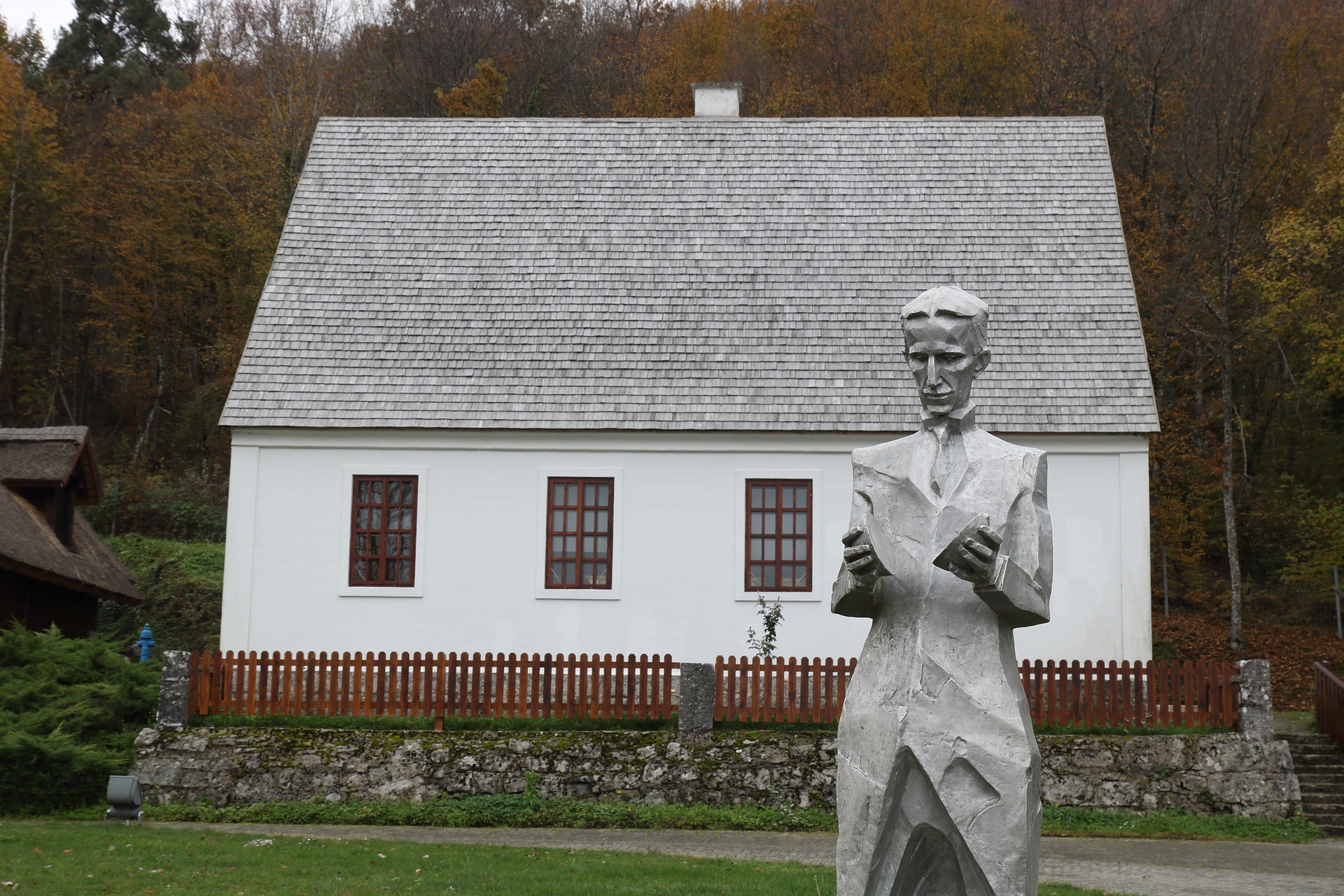
Memorial Center "Nikola Tesla" Smiljan - Pixcell
Plitvice Lakes
Probably the most well-renowned destination that Lika has to offer, Plitviče Lakes National Park is a 295 km2 forest reserve in the northeastern corner of the region. Known for its chain of 16 terraced lakes and waterfalls, this stop will bring out the inner naturalist in even the most well-established city dwellers. The park gained significant international attention in 2014 when a video of Croatian duo 2CELLOS went viral, garnering millions of views on YouTube. Even without the splendour of chordophone melodies, the natural beauty of the lakes speaks for itself, with over a million people visiting the park every year. If you want to avoid crowds, visit outside of the July-August rush. If you find yourself there during in high season, arrive early. The park opens at 7 am, and tour busses generally show up at 9 am. Most importantly, don’t make this the only stop on the Likan leg of your journey. For travellers looking to get off the beaten path, spending some time in at least one of the other options on this list will provide a more authentic and well-rounded experience.
The Croatian Littoral
If you thought Croatian maritime beauty was restricted to Dalmatia and Istria, think again. The equally magnificent Croatian Littoral lies just over the mountain from Lika’s vast woodlands. Travellers who crave the sea but shy away from crowded beaches will find Eden along this exquisite, rugged stretch of coastline. Mainly comprising the areas between Rijeka and Dalmatia, the Littoral hosts several charming seaside towns and villages with mild Mediterranean ambiance, a contrast to the more continental interior. My grandfather would recount tales of the difference in climate between his village and the coastal towns he would visit during his youth. “In my village, cold winters, but over the mountain, hot and… palm trees!” He would exclaim, testifying to the incredible variety his homeland provides.
You, too, can share in witnessing this marvel of geography. Quick day trips to the Littoral are a summer must for anyone staying in Lika. Journey to Zavratnica Bay, where you will find crystal blue waters between the steep cliffs that compose this tranquil inlet. A sunken German WWII ship can also be found here for those just as excited about diving into history as they do the ocean.
The town of Senj may also be of interest to anyone keen to embrace European history while staying dry. Stopover at Nehaj Fortress to marvel at the majesty of the stone walls that have defended the settlement as far back as 1558.
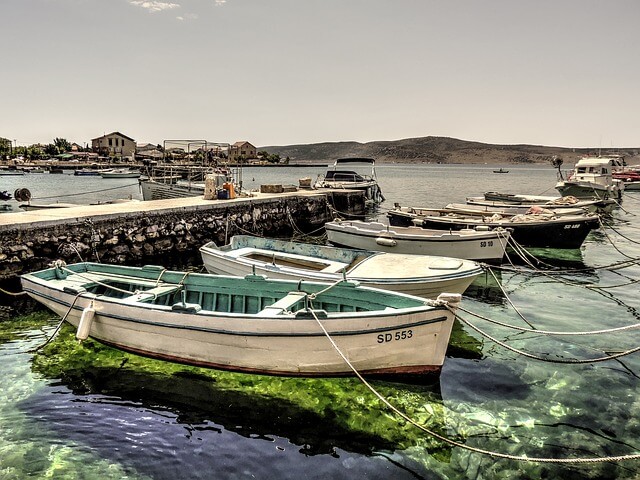
Boats in the Senj harbor - Pixabay
Gospić
The administrative center of Lika, located at the heart of the region, Gospić is an attractive destination for anyone trying to escape big crowds. Despite its modest size, the town is full of the same Southeastern European charm that invites tourists to neighbouring constituencies each year. Existing at the crossroads of empires, Gospić was initially built between two Ottoman forts, later experiencing rule under various other regimes, leaving a unique mark on the town. The proximal location of Gospic to many of Lika’s best tourist attractions makes it an ideal base from which to explore the surrounding area.
For more, check out our lifestyle section.
ETIAS and Schengen: What Croatia Bound Travelers Can Expect in the Coming Months
9 March 2022 – As the Croatian tourism sector begins to recover in the wake of the COVID-19 pandemic, prospective travellers should be aware of the new European Travel Information and Authorization System (ETIAS), which is supposed to come into force by the end of this year.
March is upon us, and as the mercury rises, COVID cases are falling, both trends that many hope will be sustained as Croatia prepares for a supposed record-breaking summer tourist season. While some reports suggest low vaccine rates may impact turnouts this summer, the Croatian Tourism Association is expecting continued recovery as countries worldwide begin to loosen COVID restrictions for citizens and foreigners alike.
Currently, fully vaccinated travellers can enter Croatia with little hassle, only requiring proof of vaccination in the form of a nationally recognized vaccine pass, such as the EU Digital Covid Certificate. Additional testing options remain for those who are not yet vaccinated.
However, while Croatia’s facilitated entry scheme is likely contributing to the awakening of dormant holidaymakers, the withdrawal of pandemic era testing requirements by source countries is more probably the reason why reservation books are filling in towns from Pula to Makarska. Many countries where Croatia sources its highest numbers of tourists have reduced or removed reentry restrictions for vaccinated citizens who are eager to start enjoying their vacation days as they did before March 2020. Besides the European Union, Canada, the US, Australia, and the United Kingdom have removed either all testing requirements or now accept the cheaper and faster rapid antigen test for vaccinated homeward bound passengers. Testing requirements may be further reduced according to the local epidemiological situation, but prospective visitors will have to wait and see.
So, it appears that this year, the springtime sun is symbolic of more than just the return of migratory birds and dusty sweaters. As passport booklets bloom in unison with May flowers, we can all heave a sigh of relief and look forward to returning the status quo we enjoyed before the pandemic, right? Well, in the short term, yes. But looking further into the future, not exactly. But don’t panic, let me explain.
The nationals of many countries have enjoyed visa-free access to member states of the European Union and the European Economic Area. These are citizens from countries that are not EU members but through treaties and visa waiver agreements are permitted to visit for 90 days or less without visiting an embassy and applying for a visitor visa. Many travellers probably are unaware of their privileged status, never paying mind to the bureaucratic hurdles that many face when planning a European getaway. Nonetheless, Croatian vacation planning will soon require an additional step.
Although no official date has been announced, starting from the end of 2022, non-EU nationals will be required to apply for an electronic travel authorization called ETIAS when visiting the Schengen area. While the idea of using to virtual waiver may seem daunting, the process is quite simple, in most cases taking a maximum of 10 minutes to complete the form and receive approval. At a cost of €7, authorization will be required for travellers aged 18-70 with a validity of three years. Applicants must provide passport information and answer a series of security questions. The system then checks your information against Interpol and EU databases.
The decision to implement ETIAS was made by the European Commission as a strategy to improve security across European borders. In fact, similar electronic travel authorizations are already in use in Canada, Australia, and the United States and have been integrated well into each nation’s respective immigration scheme. It is important to note that those who possess multiple citizenships, including at least one EU/Schengen passport, will not be required to apply for ETIAS so long as they cross the Schengen border using their local travel document. It is also important to note that those who hold permanent residence in Croatia will also be exempt from this requirement. Fortunately for those who still have reservations, officials will provide a 6-month grace period that will allow passengers to adapt to the new system, streamlining the introduction of a process that many will still view as tedious and unfamiliar.
Some may have noticed that ETIAS applies only to Schengen members, a status that Croatia has yet to obtain. This observation is correct, but Croatia may still implement ETIAS upon its initial trial at the end of this year. After undergoing the most comprehensive evaluation for Schengen membership of any state so far, in December 2021, government officials from the 27 EU members agreed that Croatia meets all the conditions for implementing the Schengen acquis.
It remains somewhat unclear when Croatia will remove its border checks, becoming a functioning member of the Schengen area. But, if government predictions are accurate, we can expect a decision from the EU as early as June, with Croatian accession before New Year’s Eve.
Whatever the pace, the implementation of ETIAS in Croatia is inevitable and a factor that future travellers should be aware of far in advance of departure dates.
For more, check out our lifestyle section.
Underwater Exploration: Istria to Brand Destinations as Best Spots for Snorkeling
March 2nd, 2022 - A map of the seabed containing all the best spots for snorkeling is in the works
Did you know that there’s no specific word for snorkeling in the Croatian language? Now that you do, it shouldn’t come as a surprise that so far, not much thought has been given to the prospect of branding destinations as attractive snorkeling spots.
As a low-effort activity that doesn’t require any special skills or a full set of scuba diving gear, snorkeling appeals to all generations. It would make sense for Croatia, a country where tourism promotion is largely based on the sun and sea, to promote destinations that are ideal for this type of underwater exploration.
Things are looking up, though, as the Administrative Department for Tourism of Istria County, along with numerous tourist boards in the region, embraced an initiative to create a map of the seabed which would feature all snorkeling-friendly locations. The initiative is seen as a good opportunity to develop a new tourism product on the Istrian peninsula.
A round table was held yesterday, bringing together representatives of the tourism sector and experts involved in marine conservation, writes Glas Istre. Various opinions were voiced at the meeting, concerning all the things that need to be taken into consideration when developing this product. It was emphasised that it’s important to find the right balance between the potential benefits of such an initiative and preservation of the sustainability and biodiversity of our waters.
‘The maritime area of Istria is an important natural resource that we need to preserve, whereas on the other hand it has exceptional potential for tourist valorization. It is for these reasons that the initiative was launched to create a new tourism product based on the principle of sustainable and responsible tourism development’, said Nada Prodan Mraković, the head of the Administrative Department for Tourism.
The round table was organised as a sort of professional brainstorming, aiming to ensure that development of this product is well thought-out so that any potential issues and mistakes could be avoided.
‘The sea is a very sensitive environment, and we can and must promote the importance of its conservation and protection as we develop this new product’, said Prodan Marković.
Director of the Istria County Tourist Board Denis Ivošević brought attention to the importance of media promotion that Istria as a destination receives by generating new tourism development projects.
‘It is very important for every tourism development project to be well-communicated. The project we are talking about today is definitely very creative and innovative, and since it has a direct link with sustainable and responsible development, it’s definitely a project that could be met with approval of the public’, said Ivošević.
The person who came up with the initial idea is Barbara Unković, owner of the Underwater Affair company and the round table moderator. As she says, diving has been a passion of hers for three decades.
‘My life story is intertwined with the sea, and the experience of working with tourists has shown me that it’s difficult to explain to people where you’re taking them diving. That’s why I started drawing maps of the seabed to make the task easier. The concept of a project related to snorkelling came to me during lockdown, when the idea was born to use maps to introduce more people to our underwater environment and make them interested in it’, she said.
The idea was shared with institutions involved in tourism development in Istria, and it drew a lot of interest thus far. Some tourist boards took steps to develop this particular segment of tourism on their own, Melita Peroković of the Fažana Tourist Board being one of the pioneers.
‘We’ve recognized the potential of snorkelling when it comes to promotion of our extremely rich history, cultural heritage and tourism offer. The Archaeological Museum of Istria (AMI) recently conducted research at a hook-shaped ancient Roman pier which, after the sea level rose more than two metres over the last two millennia, now lies submerged in the area in front of Villa San Lorenzo. Together with the AMI, we researched how this archeological site could be valorised for tourism purposes through the means of snorkeling, and we were the first in Croatia to receive approval from the Ministry of Culture to allow snorkelling above a protected cultural asset’, said Peroković.


